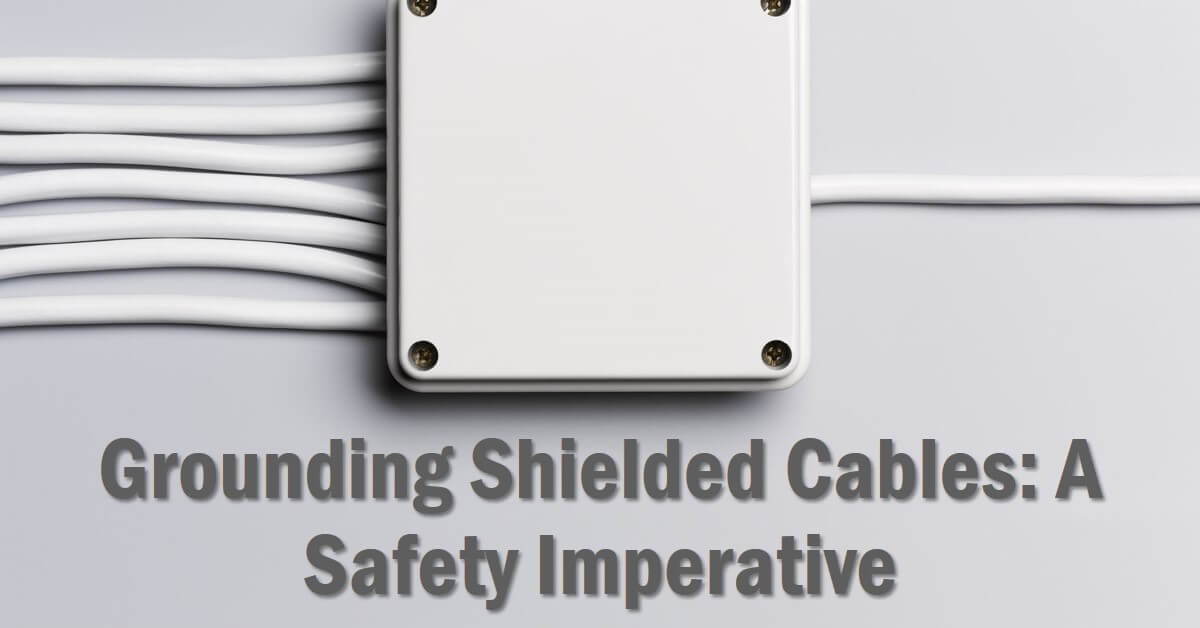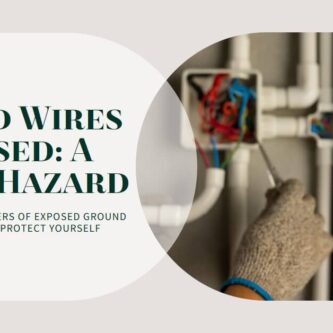Image: “Article Feature Image” by Bing is licensed under CC BY-NC-SA 4.0. Source: Bing Graphic Art. License: CC BY-NC-SA 4.0.
Shielded cables play a crucial role in electrical systems by protecting against electromagnetic interference (EMI) and ensuring safe and reliable transmission of signals.
However, proper grounding of shielded cables is equally important to maximize their effectiveness.
Neglecting to ground-shielded cable can lead to increased electrical hazards, heightened electromagnetic interference (EMI), degraded signal quality, and reduced equipment lifespan.
In this article, we will explore the consequences of neglecting to ground shielded cables and discuss the potential risks involved.
Understanding Shielded Cable
Shielded cables consist of conductive material surrounding the signal-carrying conductors, creating a protective shield against external interference.
The shielding can be made of materials such as foil, braid, or a combination of both. It acts as a barrier, preventing electromagnetic radiation from penetrating or exiting the cable, thus preserving signal integrity.
Importance of Grounding Shielded Cable
Properly grounding shielded cables serves several critical purposes:
- Safety: Grounding reduces the risk of electric shock by providing a safe path for electrical currents to flow in the event of a fault or short circuit. It helps prevent excessive voltage from reaching equipment or causing harm to individuals.
- Electromagnetic Interference (EMI) Mitigation: Grounding shielded cables eliminate the buildup of unwanted electrical potential and minimize the occurrence of EMI. This ensures that sensitive equipment is not affected by external electromagnetic disturbances, allowing for reliable data transmission and improved performance.
- Protection Against Voltage Surges and Static Electricity: By providing a low-resistance path to the ground, grounding dissipates excess electrical energy, safeguarding equipment from voltage surges and transient events. It also helps discharge static electricity, preventing damage to sensitive components.
Consequences of Not Grounding Shielded Cable
Neglecting ground-shielded cables can have various detrimental effects:
- Increased Risk of Electrical Hazards: Without proper grounding, the risk of electric shock or electrocution rises significantly. In the absence of a designated path for current to flow during a fault, the equipment and surrounding environment may become hazardous.
- Enhanced Electromagnetic Interference (EMI): Ungrounded shielded cables can act as uncontrolled antennas, picking up external electromagnetic signals and interfering with the transmission of data or signals within the cable. This can result in degraded performance, errors, or complete signal loss.
- Degraded Signal Quality and Performance: Inadequate grounding can lead to signal degradation within the cable, resulting in poor data transmission, increased error rates, and compromised system performance. This is particularly critical in applications such as audio, video, and high-speed data transmission.
- Reduced Lifespan of Equipment and Components: The absence of grounding can cause excessive voltage buildup, leading to premature aging and failure of electronic components. Over time, this can result in frequent equipment malfunction, downtime, and increased maintenance costs.
Read also my article: Can Cables Really Catch Fire? Here’s What You Need to Know.
Specific Scenarios and Examples
Consider the following scenarios where neglecting to ground shielded cables can have severe consequences:
- Data Centers: In data centers, ungrounded shielded cables can introduce EMI, leading to data corruption, errors, and system instability. This can result in compromised reliability, potential data loss, and significant financial implications for businesses relying on data center operations.
- Industrial Environments: Industrial facilities often have numerous sources of electrical noise, such as heavy machinery and power equipment. Failure to ground shielded cables in such environments can lead to increased EMI, negatively impacting the operation of sensitive control systems and posing safety risks.
- Audio and Video Installations: Ungrounded shielded cables in audio and video installations can introduce unwanted noise, distortion, and interference, degrading the overall quality of sound or picture reproduction. This can diminish the user experience and hinder professional audio-visual productions.
Mitigating Risks: Best Practices for Grounding Shielded Cable
To mitigate the risks associated with ungrounded shielded cables, it is essential to follow the best practices:
- Guidelines for Proper Grounding: Adhere to industry standards and guidelines for grounding shielded cables. This includes ensuring proper connections to earth ground, using appropriate grounding hardware, and employing suitable grounding techniques for specific applications.
- Working with Professionals and Qualified Electricians: Consult with experienced professionals or qualified electricians who possess the necessary knowledge and expertise in grounding practices. They can provide guidance tailored to your specific electrical system and ensure compliance with safety regulations.
- Regular Inspections and Maintenance: Conduct regular inspections of shielded cables and grounding systems to identify any faults, corrosion, or loose connections. Maintain a proactive approach to address any issues promptly and ensure the integrity of the grounding infrastructure.
- Importance of Following Industry Standards and Regulations: Familiarize yourself with applicable industry standards and regulations regarding electrical grounding. These standards are designed to promote safety, minimize EMI, and enhance system performance. Adhering to them will help mitigate risks and ensure the optimal operation of shielded cables.
Conclusion
Proper grounding of shielded cables is vital for maintaining the safety, reliability, and performance of electrical systems.
Neglecting ground-shielded cables can result in increased risks of electrical hazards, enhanced EMI, degraded signal quality, and reduced equipment lifespan.
By adhering to best practices and industry standards, the potential consequences of ungrounded shielded cables can be mitigated, ensuring optimal operation and protecting both personnel and equipment.
you work With Electricity! Don’t leave empty-handed!
Looking to stay ahead of the game in the world of electrical engineering? Subscribe to my YouTube channel and gain access to exclusive content you won’t find anywhere else!
The staff I recommend (Amazon Affiliate Links to products I believe are high quality):
- Economy 120 Volt/60Hz AC Power Source – Step-Down Voltage & Frequency Converters 1800W
- UNI-T Digital Multimeter Tester UT139C
- 50-Amp Extension Cord for RV “100ft”
- Voltage Stabilizer 110/220v
- Hair Dryer “best selling“
- TOSHIBA EM131A5C-BS Countertop Microwave Ovens
Disclaimer: This contains affiliate links to Amazon products. I may earn a commission for purchases made through these links.



